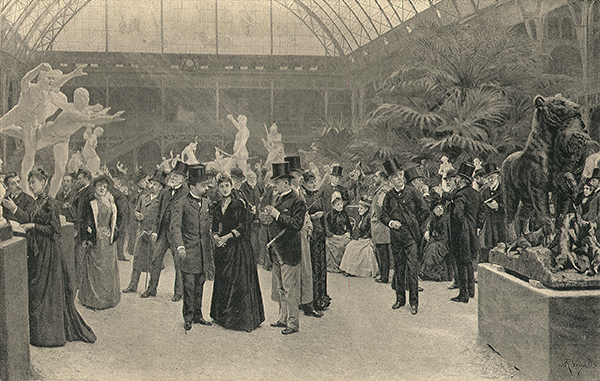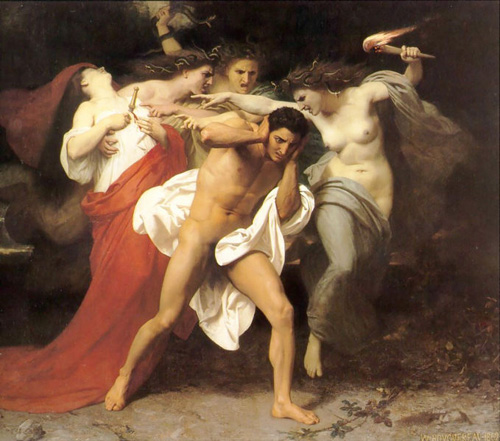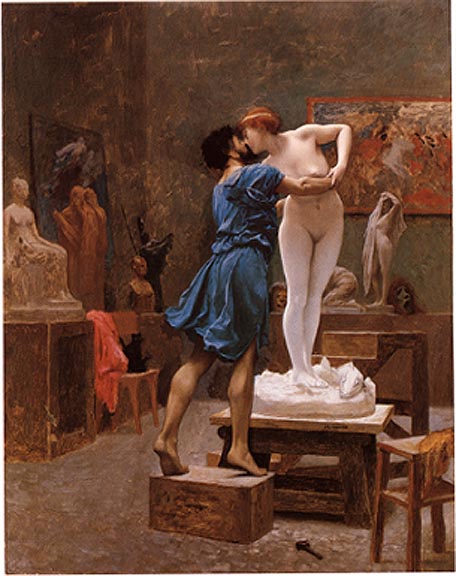Day 3-- Official Culture in Paris, 1850-1900
As a window into forces in French society that resisted change in the 19th century, today we are going to be considering the conservative art establishment that dominated much of Parisian culture in the second half of the 19th century.
Tomorrow Morning Your Team Will Make A Presentation Answering One of these Questions:
Question 1:
In what ways were the ideals of the official art of mid-19th century Paris dominated by memories of the past?
Question 2:
What were the official "academic" painters of the mid-19th century trying to do? What were their goals? What was their definition of great art?
Question 3:
In what ways did the systems for producing, selling, and consuming art encourage the dominance of tradition and discourage innovation?
This is how we will proceed:

Paris Salon, 1890
Wednesday Morning:
- Whole Class: The entire class will consider the values implicit in some representative paintings from this period and the institutional framework within which art was produced, and I will present some background on the history of art.
- Teams: We will divide up the questions, and each team will look over the materials that are available for answering its question and assign particular readings to each member
- Individuals: Each person will have about an hour to read over the material assigned them by their team and to write up a short research report about what they have found that might be most useful in answer questions that group is setting out to answer. (These reports will be used by your team mates to help prepare the group presentation and will be turned in to me the next class period. They were also serve as an assignment for the course.)
- Teams: Teams will discuss what they have found, ask questions about whatever was not clear or needs amplification, and start to prepare the presentation for the next day.
Afternoon:
- Whole Class: Visit to the Louvre to see examples of classicism in French art and the apartments of Napoleon III
Thursday Morning:
- Teams: Class will begin with a presentation of about 10-minutes by each team answering the question from the previous day, followed by a general discussion.
Materials to Work With
What Was Considered Great Art in the World of the Parisian Academy
- Harrison C. and Cynthia A. White, Canvases and Careers; Institutional Change in the French Painting World
William-Adolphe Bouguereau (1825-1905) The Remorse of Orestes (1862)
William-Adolphe Bouguereau, Birth of Venus 1879
The Social Context of Art in mid-19th Century Paris
- 19th Century Academic Painting
- Raymond Rudorff, The belle epoque; Paris in the nineties (New York, Saturday Review Press, 1973)
- F.W.J. Hemmings, “The Art World: Producers and Consumers” from Culture and Society in France, 1789-1848 (Leicester University Press, 1987), pp. 297-301.
- Harrison C. and Cynthia A. White, Canvases and Careers; Institutional Change in the French Painting World
- David W. Galenson and Robert Jenson, “Canvases and Careers: The Rise of the Market for Modern Art in the Nineteenth Century,” NBER Working Paper No. 9123 September 2002 pp.4. 8- 9, 10-12.
- The Career of Jean-Léon Gérôme
- Anthony Sutcliffe, Paris: An Architectural History (Yale University Press: New Haven, 1993), pp.79– 81 84.
- Art in the 2nd Empire
Officially accepted works from the period
Jean-Léon Gérôme, Pygmalian and Galatea (c 1890)


